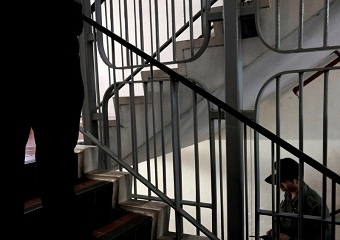Hong Kong’s prison authority will test facial recognition technology, tracking wristbands and robot warders to create a “super security and surveillance system” and hopefully ease the load on hard-pressed staff, the prison chief has said. As part of the “smart prison” initiative to modernise the city’s correctional facilities, a closed-circuit television system with a video analytics function to detect suspicious behaviour among inmates is being tested, as is a smart wristband.
Commissioner of Correctional Services, Danny Woo Ying-ming said the CCTV camera can be equipped with facial recognition technology, while the wristbands, which have to be scanned before entering a room, can be used in future to verify inmates’ identities and monitor their whereabouts at any given time. “If I want to know how many inmates and who exactly is in the sewing factory, for example, the three systems can work together,” he said. “At present our staff have to do a manual headcount, which does not verify inmates’ identities. You don’t know who is who.”
Woo hopes to try out the upgraded systems by the middle of next year. At Lai Chi Kok Reception Centre in Kowloon, a robot prison guard has begun patrolling the prison premises in a trial which began in September. Made in the Netherlands and costing around HK$600,000 (US$76,500) it is equipped with a camera and microphone and moves around on six wheels.
Prisoners and officers can speak to each other through the robot’s remote conversation function, while its camera sends high-definition images instantaneously. Human warders need to patrol the premises every 15 minutes, taking about nine minutes to finish one round. The robot takes six minutes. “We can set the speed of the robot,” said Woo, who believed more frequent robot patrols would not only ease the burden on his officers but also keep a closer eye on inmates.
“Inmates have been known to hang themselves in the interval between patrols. We cannot ask our staff to patrol every five minutes.” In future, the robot could be equipped with an infrared camera to check on inmates in their cells. Woo hoped the technology upgrades would help protect staff, raise their sense of professionalism and reduce the rate of turnover, which was worse than for the city’s other disciplinary forces.








